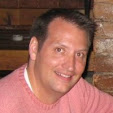
The
Republic of Estonia is the smallest of the three
Baltic countries and is located between
Latvia and
Russia. Across the Baltic Sea and Gulf of Finland are
Sweden and
Finland.
Eesti includes 1,520 islands and, in total size, is a little smaller than New Hampshire and Vermont combined. As one of the smallest countries in Europe it is home to 1.3 million people.
Tallinn is the capital and its largest city.

Estonia had been ruled for centuries by
Denmark, Sweden,
Germany and the Russian Empire. After WWI, it gained independence in 1918. In 1940, it was annexed by the USSR and became the
Estonian Soviet Socialist Republic. The non-violent Singing Revolution led to independence in 1991 and the last Russian troops left Estonia in 1994.

Today, Estonia is a parliamentary republic. In 2004 it joined both the
EU and
NATO. In 2011, the
Euro replaced the Estonian kroon as the official currency.

Estonia is one of the most online counties in the world. Wi-Fi is everywhere and it was the first country in the world to allow citizens to actually vote online. Without Estonia there would be no Skype.
Like Czechs, Estonians are among the least religious people in the world. The largest religious denominations are Evangelical Lutheran and Russian Orthodox.
At 18, all males have compulsory military or civil service for 8 - 11 months depending on education.

Estonian is the official language.
It's a crazy language. Nouns and pronouns have no gender, verbs have no future tense and there are 14
grammatical cases. The closest language is Finnish and they only understand around 40%.
During Soviet times, many Estonians were arrested, killed and/or deported. The Soviet Union brought in many Russian speakers. Russian was encouraged as the unifying language across the USSR so Russian speakers had no incentive to actually learn how to speak Estonian.

When Estonia regained its independence, citizenship was granted to those who could prove family ties prior to 1940. Those Russians who came to Estonia between 1941 - 1991 were permitted to gain citizenship but had to pass an Estonian language test. Those "Russian" Estonians who did not receive citizenship are non-citizens and are not entitled to an Estonian passport.

Instead they hold an alien passport which does not allow them the same travel privileges as other EU citizens. They are also not allowed to vote in national elections. Ethnic Russians make up about 25% of the population (more in Tallinn and the east) but many do have Estonian passports. There are about 95,000 non-citizens. While I'm sure that most Russians can't get a passport because they can't speak Estonian,
can the exam really be that difficult? I get that Estonian might not be the easiest language to learn, it can't take 20+ years to become proficient enough to pass a test.
Estonia is part of
Schengen so those with Estonian passports need an expensive
visa in order to visit Russia. Russia permits those with the alien passports to visit without a visa which is one reason why many people retain the alien passport instead of getting an Estonian passport. Estonia does not permit dual citizenship.

Russia's claim that it has a right to protect Russian speakers must be an alarm for Estonia. Russia used this argument to invade
Georgia in
2008 and more recently in
Crimea. Russia could use the same argument about Ethnic Russians in Estonia. The key difference is that Estonia is a NATO member so trying to annex parts of Estonia would be considered an attack on all NATO countries.
On our upcoming trip to Tallinn, we plan on taking a day trip to Narva
which is in a predominantly Russian area on the border. Here's an
interesting video I found on YouTube that talks about the border town.
©Deutsche Welle
 Earlier today, Krasimir and I caught a matinee performance at the Mahen Theater.
Earlier today, Krasimir and I caught a matinee performance at the Mahen Theater. We went to see the Bohemia Ballet from Prague perform Petr Pan.
We went to see the Bohemia Ballet from Prague perform Petr Pan. 

































.jpg)
.jpg)
.jpg)
.jpg)
.jpg)

.jpg)
.jpg)
.jpg)
.jpg)
.jpg)
.jpg)
.jpg)
.jpg)
.jpg)
.jpg)























